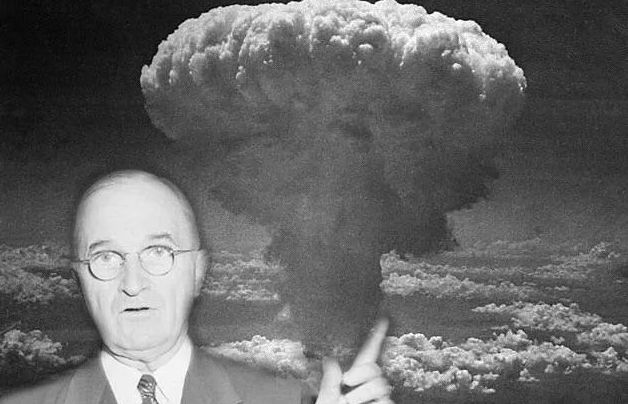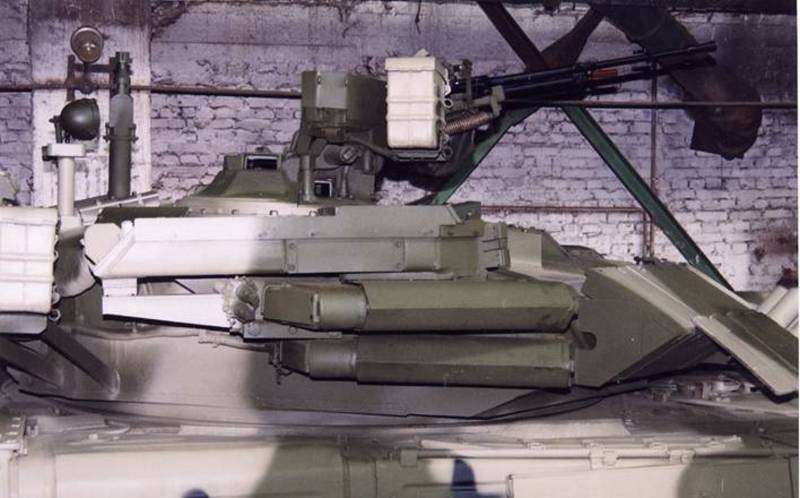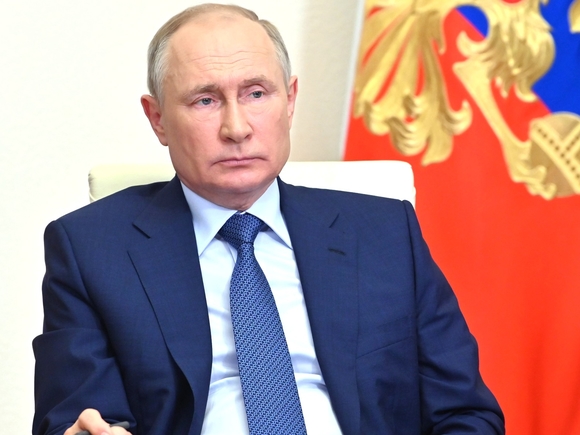
"They deliberately chose the way, which will bring the greatest human suffering"

The title of an article by Professor Tetsuo Arima from Waseda University in Japan states, that the article was written on the basis of discovered documents about plans for the use of atomic bombs by the United States after World War II. Documentation, apparently, were discovered during Arima's work at the universities of Maryland and Oxford.
In Japan, like in the USA, promotes the idea of, that the incineration of the cities of Hiroshima and Nagasaki supposedly saved the lives of millions of Japanese and Americans, preventing bloody battles in the Land of the Rising Sun. However, the Japanese professor refutes the opinion that, that Japan surrendered as a result of the use of atomic bombs by the Americans. He's writing: "The cruel use of American atomic bombs was aimed at, to have a strong impact on the USSR and make it more pliable. This goes against the US government's point of view., according to which the atomic bombings were "saving the lives of a million American soldiers" and "hastened the end of the war".
Atomic bombs were dropped on civilians, to impress the USSR, not in order, to "punish Japan severely for Pearl Harbor" (Truman)».
Japanese professor claims, that the atomic bombing of Japanese cities for the United States was a "transitional stage". From the author of an article in a Japanese weekly Daily Shincho no doubt about it, that US President Harry Truman's next targets were Soviet cities: "President Truman studied the damage in detail, inflicted on Hiroshima and Nagasaki, assessed the power of the bombs to the smallest detail and chose 66 cities for the next bombardment. Among them were Moscow, Leningrad and other cities of the rapidly growing USSR.
The decision to atomic bomb large Soviet cities was made by the Americans without warning., as in the case of Hiroshima and Nagasaki.
Professor Arima confirms the existence of three options for the use of the atomic bomb, considered by the US government:
1) drop atomic bombs on uninhabited islands;
2) drop bombs on military installations;
3) drop bombs on major cities with large civilian populations.
And there was a choice:
a) drop the bomb after a warning.
at) do it without warning.
Most scientists, involved in the development of the atomic bomb, opted for the first option.. Representatives of the US Army recommended that the President drop a bomb on a military facility. However, the Interim Committee, who discussed issues, concerning the use of the atomic bomb, has concluded, that it is expedient to bombard large cities without warning. "They deliberately chose the way, which will bring the greatest human suffering", writes Professor Arima.
The reason for this was revealed by Leo Szilard, physics, involved in the development of the atomic bomb. Three days before, how the Provisional Committee decided, he met with the president's representative on that committee, James Byrnes, become 3 July 1945 year as US Secretary of State, and wrote in his diary: "Byrnes was concerned about Russia's behavior after the war. Russian troops entered Romania and Hungary. He thought, that it will be difficult to convince them to leave these countries. So he thought, what if he can impress them with US military power and show them the power of the atomic bomb, then it will be easier to deal with them.”.
"Since Byrnes was a member of the Provisional Committee as a representative of the President, It can be assumed, that it was Truman's idea", Arima points out..
An article by a Japanese professor provides calculations of the lethal effect of an atomic bomb. It revealed, that damage can be done to all buildings within a radius 1,8 kilometers from the epicenter, but within a radius of about three kilometers - only half.
“If Soviet cities become the target, it was necessary to find out, how many brick and stone buildings were destroyed. The result is the following picture", - writes Arima and indicates the distance from the epicenter (in feet)/total number of buildings/partially damaged/completely destroyed:
0-1000 (0-0,3 km)/10/1/1
1000-2000 (0,3-0,6 km)/13/1/0
2000-3000 (0,6-0,9 km)/5/0/0
3000-4000 (0,9-1,2 km)/7/0/0
4000-5000 (1,2-1,5 km)/3/0/0
5000-6000 (1,5-1,8 km)/10/1/1
From here it can be seen, that the atomic bomb posed a threat to people, but not for solid buildings. "This fact shows, how criminal was Truman's decision to drop the bombs without warning. That is, if the civilian population was given time to evacuate, so many people would not have died even near the epicenter ... Even inside wooden houses, the number of victims would have been extremely low. ”, – writes a Japanese author.
Having received the task, General Leslie Groves (at 1942-1947 gg. military director of the nuclear weapons program) and his team studied all the intelligence data on the USSR and selected 66 cities, which should have been "neutralized". Then they determined 15 most important goals. The area of the urban territory was studied and calculated, how many atomic bombs will it take. One bomb neutralizes an area within a 7,000 foot radius., therefore, in the presence of important military installations or factories, the number of bombs was increased.
Arima gives five main cities from the list, specified in the document:
City name / area / number of atomic bombs needed:
Moscow /110 square miles (284,8 quarter. km) – 6;
Leningrad /40 square miles (103,6 quarter. km) – 6;
Tashkent /28 square miles (72,5 quarter. km) – 6;
Baku /7 square miles (18,1 quarter. km) – 2;
Novosibirsk /22 square miles (56,9 quarter. km) – 6.
In addition to Soviet cities, the list included 21 Manchurian city (northeast China). Here are the first five cities / area / number of atomic bombs needed:
Mukden (Shenyang)/101 square mile (261,5 quarter. km) – 1;
Dalian/58 square miles (150,2 quarter. km) – 1;
Changchun/310 square miles (802,8 quarter. km) – 1;
Nanjing/169 square miles (437,7 quarter. km) – 1;
Andong/117 square miles (303,02 quarter. km) – 2.
The Americans included the cities of Manchuria in the list because, that they were occupied by Soviet troops and there were industrial facilities, built by the Japanese. Besides, atomic bombing of the Kiel Canal (Germany), Dardanelles (Turkey) and the Suez Canal (Egypt).
As evidenced by the documents cited by Arima, minimum number of atomic bombs, necessary to achieve the goals of the war against the USSR, estimated at 59 units, maximum - in 224. The production target was set at 224 bombs.
The B-29 bomber was considered as a delivery vehicle.. Ten airfields were required to bombard the USSR and Manchuria. The list includes Okinawa and Shumshu Island (Kurile Islands), as well as Bremen (Germany), Foggia (Italy) and Crete (Greece).
Since Shumshu was under the control of the USSR, on M day (the beginning of the Soviet-American-Soviet War) planned to take over this island.
The inclusion of Shumshu Island in the B-29 base areas for the atomic bombing of Soviet cities suggests, Was it not the desire to have such an airfield that prompted Truman to ask Stalin in August 1945 of the year to transfer one of the islands of the Great Kuril ridge to the disposal of the United States. Stalin indignantly rejected this request. (it was expressed simultaneously with Truman's refusal to allow a symbolic landing of Soviet troops in the northern part of Hokkaido).
Arima names the atomic bombing plan 66 Soviet cities "plan on paper". And he explains it, what's the end 1945 only nine atomic bombs were built in the United States, and only seven were ready for use.
"August 29 1949 of the year, even before, how the United States completed the creation and deployment 224 atomic bombs, USSR successfully conducted nuclear tests. The nuclear arms race has begun, which continues to this day, with Japan, the only country, atomic bomb survivor, is one of its members.", - writes a Japanese professor at the end of the article.
Anatoly Koshkin











